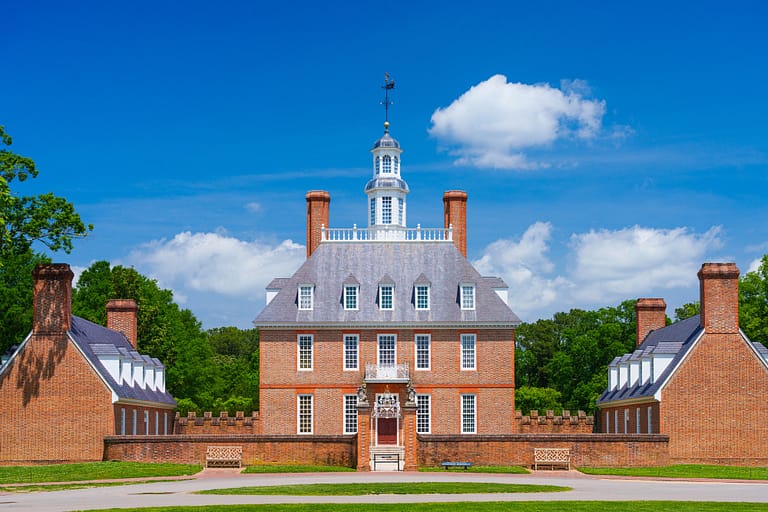Green Restoration of Historic Dallas Homes
Historic Dallas homes are being restored using sustainable and eco-friendly methods, preserving their timeless appeal. By combining modern comforts with environmentally-conscious practices, these homes are rejuvenated while still honoring their unique history and craftsmanship.
With LEED certification and green building techniques, these residences become captivating sanctuaries that seamlessly blend the past with the present.
This project's success has left homeowners delighted with their revitalized homes and sets a positive example for future historic preservation efforts in Dallas.
Key Takeaways
In Dallas, old homes are getting a green makeover using sustainable and eco-friendly methods. This helps preserve their classic charm while making them more modern and environmentally friendly. These homes are being restored with green building techniques and LEED certification, creating peaceful and eco-conscious living spaces that honor the past and embrace the present.
Homeowners are thrilled with the results of this project, as their historic homes are being revitalized in a sustainable way. This sets a positive example for future historic preservation efforts in Dallas, encouraging more sustainable and environmentally conscious restoration projects.
Eco-Friendly Materials and Techniques
Restoring historic Dallas homes in an environmentally friendly way involves using eco-friendly materials and techniques.
It's important to maintain the homes' historic charm while integrating sustainable practices. For instance, using reclaimed wood for flooring and beams not only adds character but also reduces the demand for new timber, promoting environmental conservation.
Energy-efficient windows and insulation help maintain the homes' authenticity while reducing energy consumption.
Additionally, using low VOC paints and finishes makes the renovation process environmentally friendly and contributes to healthier indoor air quality.
Techniques like passive solar design and rainwater harvesting further enhance the sustainability of these historic homes.
Energy-Efficient Upgrades
When you're thinking about making energy-efficient upgrades to historic homes in Dallas, it's essential to focus on upgrading the mechanical systems and lighting. By replacing the HVAC and water heating systems with energy-efficient models, you can lower utility costs and reduce environmental impact. LED lighting fixtures are also a great choice as they use less energy while preserving the home's historic appeal. Additionally, the installation of smart thermostats and sensors can further improve energy efficiency. Here's a summary of key energy-efficient upgrades for historic homes in the Historic District:
| Energy-Efficient Upgrades | Description | Benefits |
|---|---|---|
| Upgraded HVAC Systems | Energy-efficient models for heating and cooling | Reduced utility costs, lower emissions |
| LED Lighting Fixtures | Modern, energy-saving lighting solutions | Decreased energy consumption |
| Smart Thermostats and Sensors | Automated control for optimal energy usage | Enhanced energy efficiency |
These upgrades allow you to maintain the historical integrity of your home while significantly reducing energy consumption and costs. Next, let's explore the importance of sustainable landscaping and outdoor spaces.
Sustainable Landscaping and Outdoor Spaces
When restoring your historic Dallas home, it's essential to focus on sustainable landscaping and outdoor spaces. This not only enhances the home's environmental efficiency but also preserves its timeless appeal.
By incorporating sustainable landscaping, you can beautify the outdoor areas while contributing to the overall green restoration of your historic home. One important step is to use native plants that are well-suited to the local climate and require minimal water and maintenance. Another key aspect is the use of permeable paving materials to reduce stormwater runoff and support groundwater recharge.
Additionally, consider installing energy-efficient outdoor lighting and water-saving irrigation systems to further improve your home's sustainability. By thoughtfully designing your outdoor spaces with sustainability in mind, you can create a harmonious environment that honors your home's history while embracing modern eco-friendly practices.
Now, let's shift our focus to the preservation of architectural heritage.
Preservation of Architectural Heritage
Preserving the architectural heritage of your historic Dallas home is essential. This involves integrating modern amenities while maintaining the original charm and character. It's important to strike a balance between respecting the past and embracing the present.
This can be seen in the restoration of custom millwork and the seamless integration of old and new elements. Each detail reflects the dedication to preserving the home's storied past and craftsmanship.
The National Register of Historic Places recognizes the significance of these homes. Transforming historic sites into sustainable, modern spaces showcases the commitment to maintaining the historical integrity. The enduring beauty of brick walls and the preservation of original building integrity are testaments to this commitment.
Ultimately, it's about cherishing the past while creating a timeless sanctuary for the future.
Green Technology Integration
When you integrate green technology into your historic Dallas home, you can enhance energy efficiency and sustainability. Incorporating modern green technology helps you preserve the historical charm of your home while benefiting from environmentally friendly practices. Here are some key considerations to keep in mind:
- Using energy-efficient mechanical systems to reduce overall energy consumption.
- Incorporating sustainable materials for construction and renovation to minimize environmental impact.
- Implementing efficient lighting designs to reduce energy usage while maintaining the aesthetic appeal of the historic home.
- Exploring renewable energy sources such as solar panels to further reduce your carbon footprint.
- Leveraging smart technology for climate control and energy management to optimize resource usage.
These green technology integrations not only honor the historical significance of your home but also contribute to a more sustainable future.
Frequently Asked Questions
What Are the Potential Tax Benefits or Incentives for Homeowners Who Choose to Restore Their Historic Homes Using Green Techniques and Materials?
If you choose to restore your historic home using sustainable materials and energy-efficient methods, you may be eligible for financial benefits and local incentives. These incentives can help reduce the costs associated with green restoration and also preserve the historical significance of your home. For example, you could qualify for tax credits or rebates for using eco-friendly materials or improving energy efficiency. This not only benefits you as a homeowner but also contributes to the overall sustainability of your community.
Are There Any Specific Challenges or Considerations When It Comes to Integrating Modern Green Technology Into a Historic Dallas Home?
Integrating modern green technology into a historic Dallas home comes with unique challenges. It's important to carefully consider preservation guidelines to maintain the home's historical integrity while incorporating energy-efficient systems and sustainable materials. This balance between preserving the home's history and embracing eco-friendly solutions requires thoughtful planning and expertise. By navigating these challenges, homeowners can enjoy the benefits of modern technology while honoring the legacy of their historic property.
How Can Homeowners Ensure That Their Green Restoration Efforts Are in Line With Local Historic Preservation Regulations and Guidelines?
To make sure your eco-friendly restoration aligns with local historic preservation rules, start by researching the specific requirements for homeowners. You can also explore tax incentives, use green restoration methods, and incorporate modern technology to dispel any misconceptions. It's essential to understand and follow these regulations to preserve the historical integrity of your property while embracing sustainable practices. By taking these steps, homeowners can contribute to both environmental conservation and the preservation of local history.
Are There Any Resources or Organizations in Dallas That Provide Support or Guidance for Homeowners Looking to Undertake a Green Restoration of Their Historic Homes?
If you're thinking about making your historic Dallas home more environmentally friendly, consider reaching out to local resources such as Preservation Dallas and the Texas Historical Commission for affordable options and community involvement. These organizations offer valuable support and guidance for homeowners like you who are interested in green renovations.
What Are Some Common Misconceptions or Myths About Green Restoration of Historic Homes That Homeowners Should Be Aware Of?
Green restoration of historic homes is often misunderstood. Many people believe it's too costly or ineffective. However, utilizing green materials, modern technology, and tax incentives can make it both cost-effective and beneficial for preserving history. For instance, using energy-efficient windows and insulation not only reduces energy costs but also helps maintain the historical integrity of the home. Additionally, incorporating reclaimed wood and recycled materials can add character and sustainability to the restoration process. These approaches not only benefit the environment but also contribute to the long-term preservation of historic homes.







